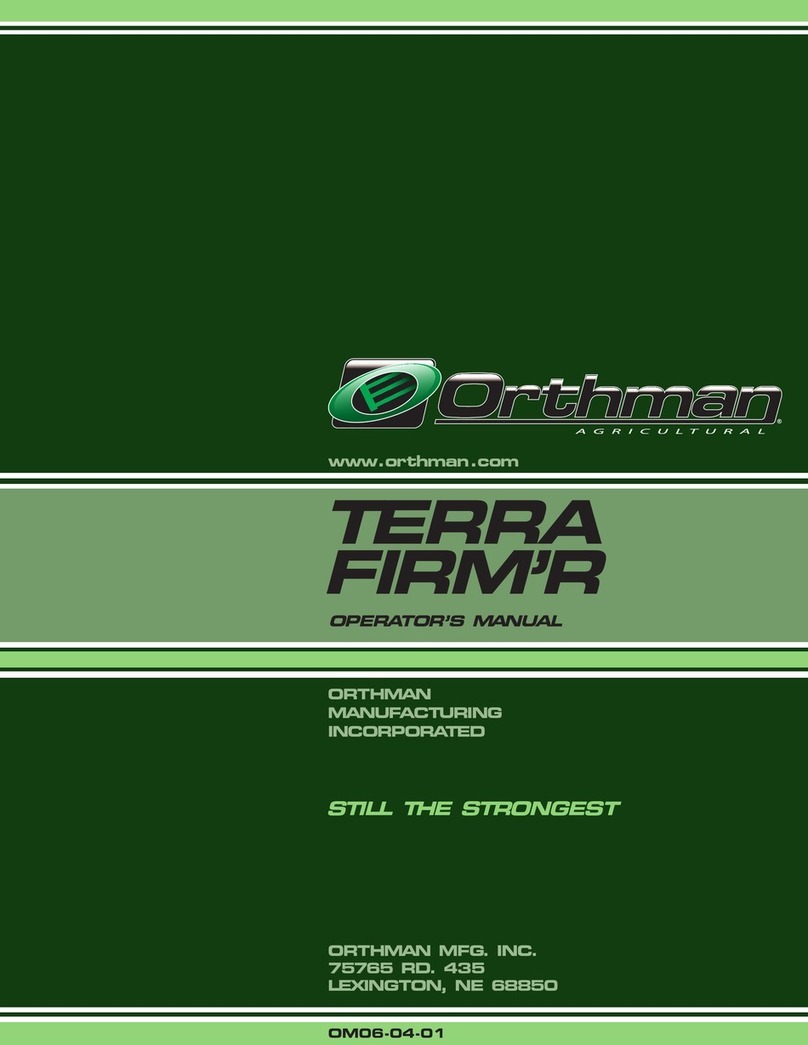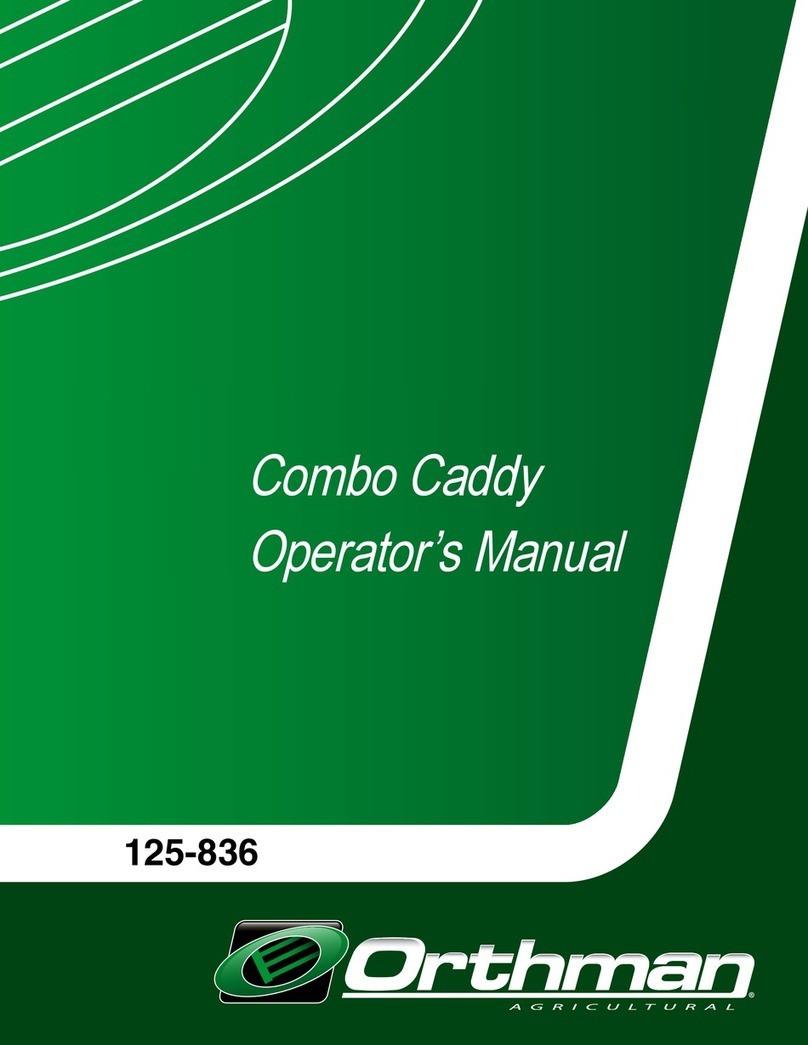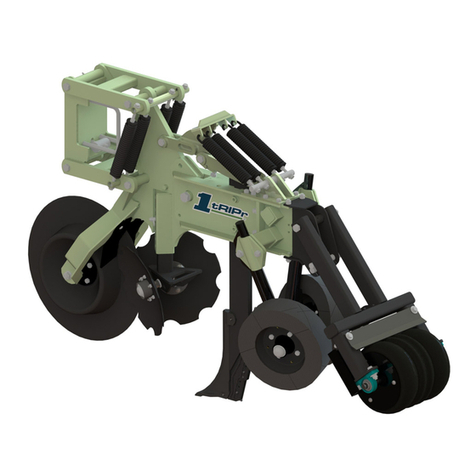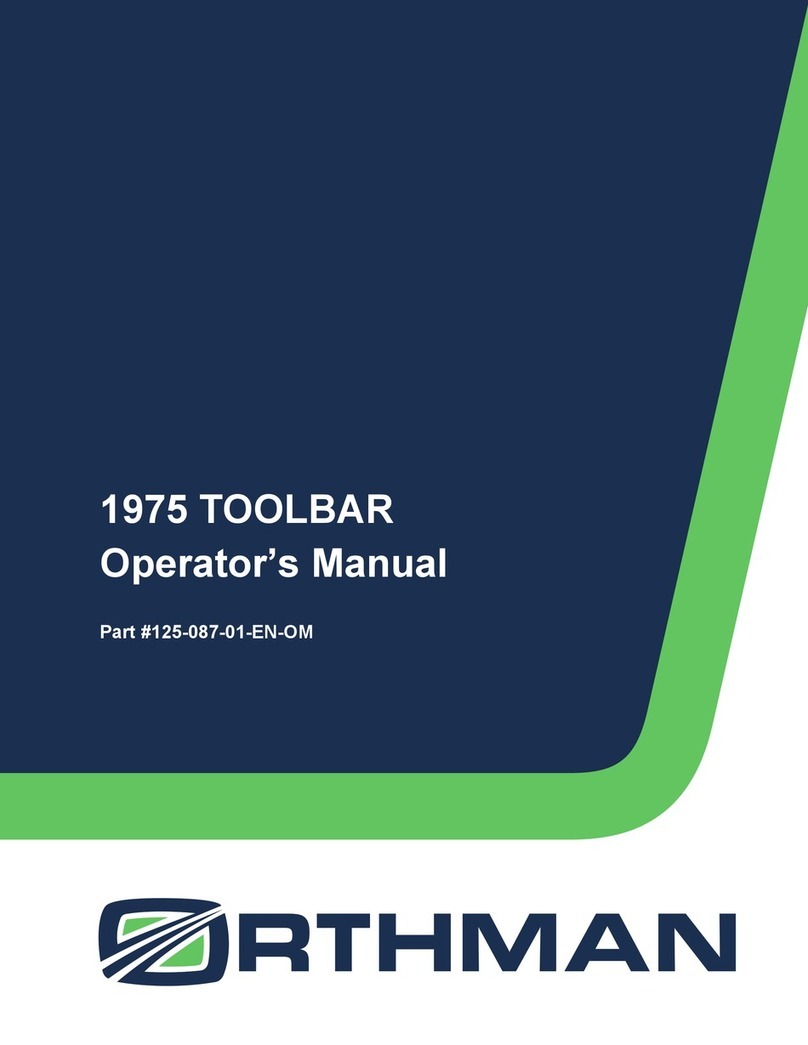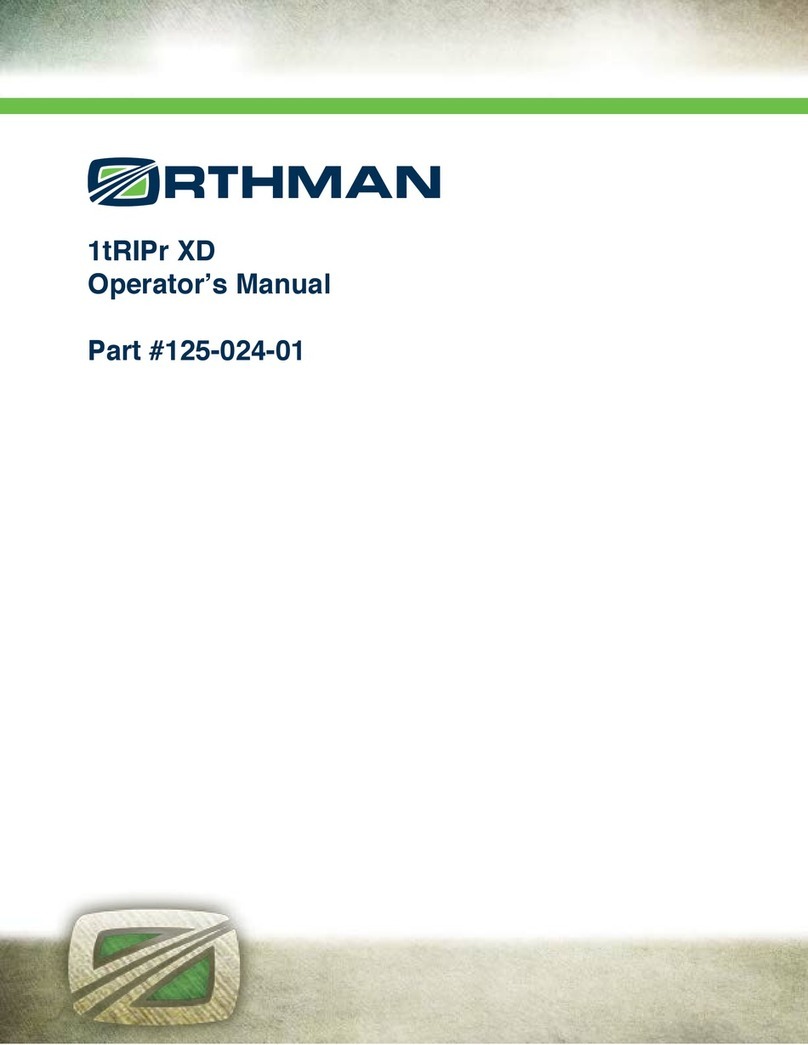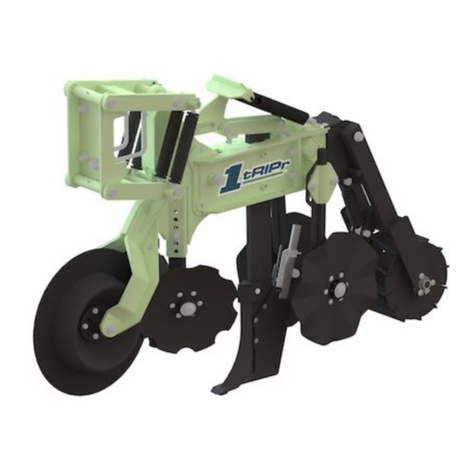
operator’s
manual
Made in the U.S.A.
TRACKER IV
WARRANTY
Orthman Mfg., Inc. warrants the whole goods products it manufactures to be free from defects in material or workmanship for a period of one (1) year from the date of
sale of the product(s) to the original user. Products not manufactured, but supplied by Orthman Mfg., Inc. on Orthman products, are subject to, conform with, and are
limited to the warranty of our suppliers.
Orthman Mfg., Inc. warrants the parts it manufactures to be free from defects in material or workmanship for a period of ninety (90) days from the date of delivery of the
product(s) to the original user. Products not manufactured, but supplied by Orthman Mfg., Inc. on Orthman products, are subject to, conform with, and are limited to the
warranty of our suppliers.
Warranty of Orthman whole goods and/or parts applies only to material and workmanship. Misuse, misapplication, neglect, alteration, accident, normal wear,
or acts of God affecting Orthman products are not eligible for warranty.
Warranty of serial numbered goods will only be considered if the product has a completed Warranty Registration on file at Orthman. This Warranty Registration must be
completed and returned to Orthman within thirty (30) days of the sale of the product(s) to the original user.
No serial numbered goods or related parts and/or labor will
be warranted without a Warranty Registration on file.
Warranty issues falling within the first thirty days of a product’s use will be handled at the discretion of Orthman.
Warranty of parts will not require a Warranty Registration, but proof of date of delivery of the product to the original customer must be provided.
WARRANTY CLAIMS:
A warranty claim and request to return defective product(s) must be presented to the Orthman Service Department by the selling dealer
describing the defect in material or workmanship of an Orthman product(s) within ten (10) days of its discovery. This claim may be made via phone, e-mail, fax,
or written request. Claims for warranty of serial numbered goods must include the Orthman product serial number and model number. Claims for warranty of parts
will not require a product serial number or model number, but must be identified by an Orthman part number. Claims for warranty of whole goods or parts must
also include proof of date of sale of the product to the original customer by an Orthman dealer.
The Orthman Service Department will proceed in making a preliminary decision as to the eligibility of the claim for warranty consideration. After the Orthman Service
Department deems it necessary to proceed with warranty consideration, a Return Goods Authorization (RGA) will be completed by the Orthman Service Department in
conjunction with the selling dealer. Upon completion of the RGA, the defective product(s) must be returned to Orthman to ensure warranty consideration. Defective
product(s) must be returned to Orthman by either the selling dealer or the customer. Customer delivery of defective product(s) must be approved by Orthman and the
selling dealer prior to delivery. The defective product(s) in question must be sent, freight prepaid, within sixty (60) days of the discovery of the product(s) failure and
initial warranty claim. Replacement product(s) may be sent to the selling dealer, directly to the customer, or picked up at the Orthman facility. Replacement product(s),
sent directly to the customer or picked up must be approved by Orthman and the selling dealer. At the discretion of the Orthman Service Department, replacement
product(s) may be sent prior to, or after, the Orthman Service Department receives the defective product(s).
Any variation in the above procedure is at the sole discretion of the Orthman Service Department.
No products will be accepted at Orthman without all proper paperwork completed including Warranty Registration and RGA(s).
Parts returned to Orthman without proper authorization will be returned to the sender at the sender’s expense.
Orthman agrees to handle all warranty claims in a timely manner and will inform dealers of any revisions or modifications to the Orthman Warranty Policy. Eligible
warranty claims will be processed by Orthman within sixty (60) days of receiving failed product(s) or a valid service or repair labor claim. Eligible warranty claims
regarding returned product(s) or service and/or repair labor will be paid through a credit memo issued to the appropriate dealer’s account as determined by the
Orthman Service Department.
If a warranty claim is found to be ineligible for warranty coverage, the Orthman Service Department will be responsible to inform the dealer in order to determine the
course of action to be taken. Orthman reserves the right to make changes in specification and design without notice and without incurring any obligations to owners
of products previously sold.
© Copyright 2006
Orthman Manufacturing Inc.
Lexington, Nebraska
All rights reserved.
Orthman provides this manual without warranty of any kind, expressed or implied. This manual reflects the product at the time of publication. All information within is
based upon current information on the publication date. Orthman assumes no responsibility for damages incurred due to the use of the illustrations, information, and
specifications within this publication.
INTRODUCTION
1 - 4








